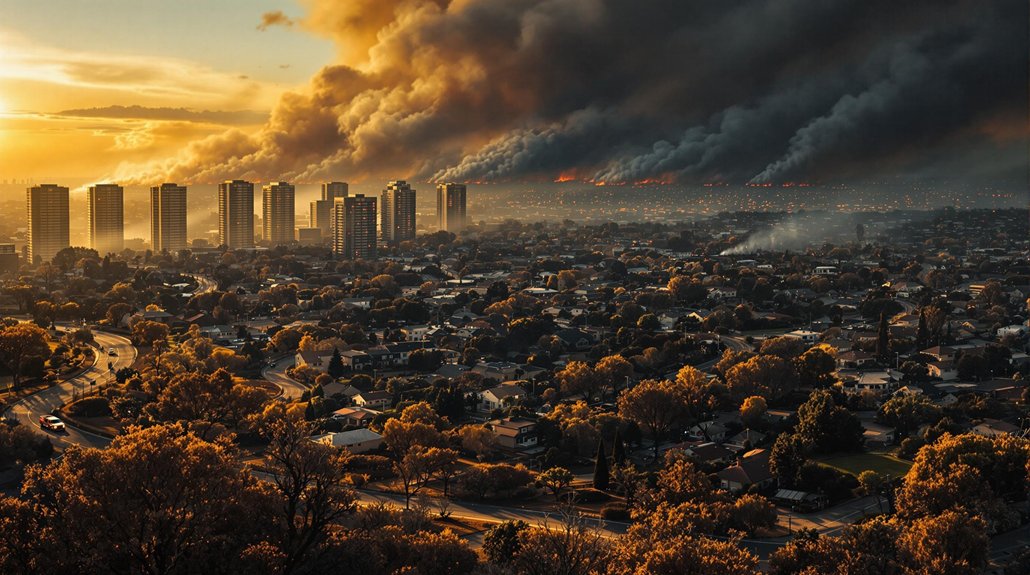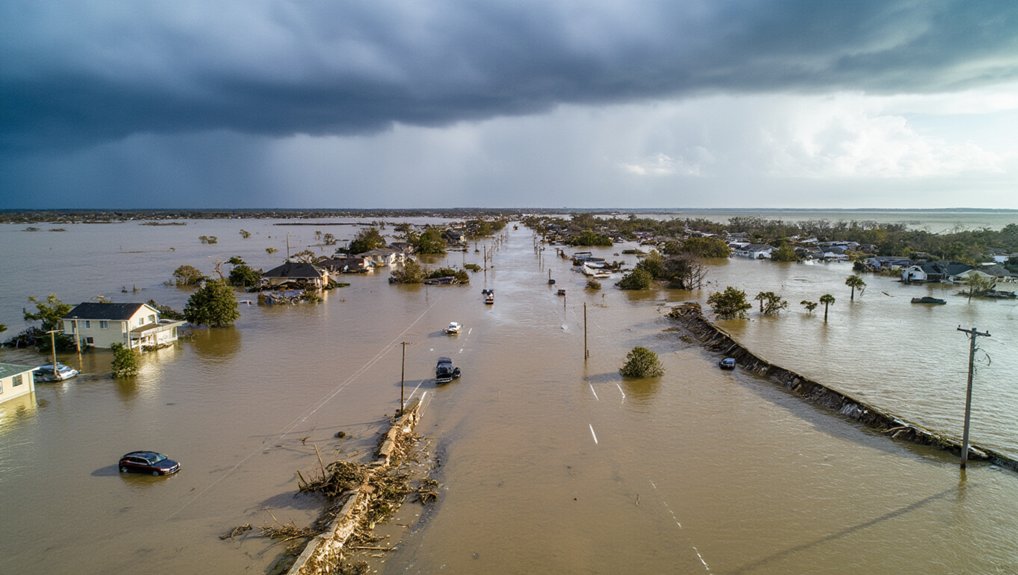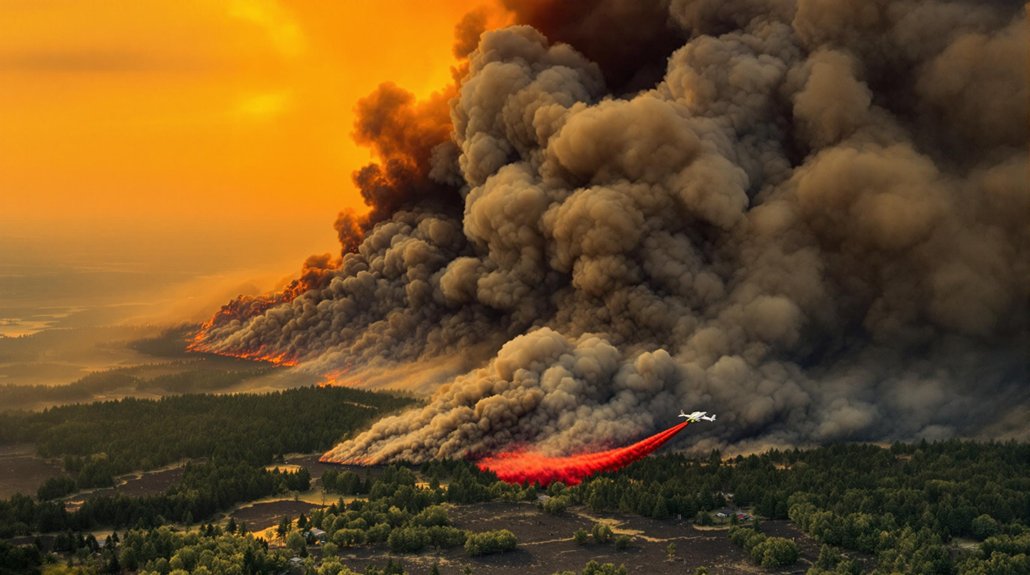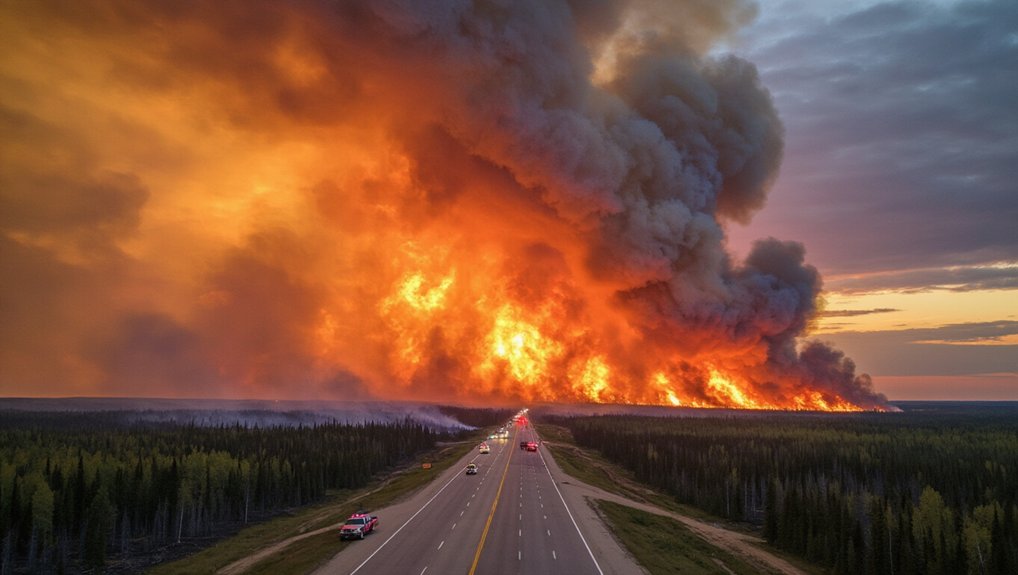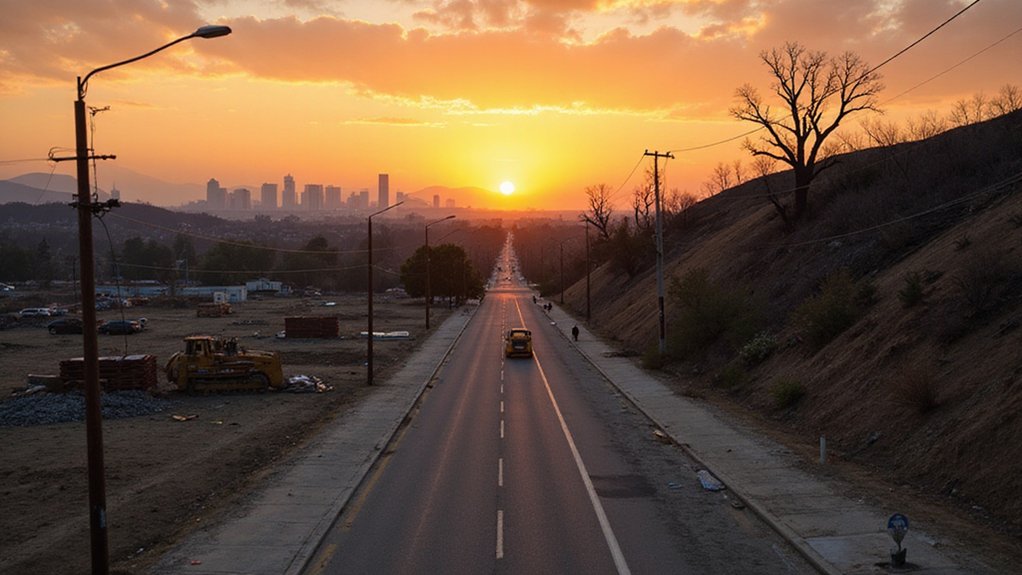Urban residents mistakenly believe they’re safe from wildfires. This false security puts city homes at high risk, especially in wildland-urban interface zones. Common building materials and landscaping choices often increase vulnerability. Urban fire departments aren’t equipped for wildland fires, and multiple neighborhood fires can overwhelm resources. Climate factors like extended droughts and rising temperatures worsen conditions. The proximity of buildings accelerates fire spread, creating dangerous situations for communities unprepared for this growing threat.
Complacency has become a dangerous trend among urban residents who believe their city locations shield them from wildfire threats. This false sense of security puts many at risk as climate change intensifies wildfire patterns across the country. While city dwellers often trust in local fire departments and water systems for protection, these resources can quickly become overwhelmed during large-scale fire events.
The wildland-urban interface (WUI), where development meets natural landscapes, presents unique dangers that many homeowners don’t recognize. Fires starting in natural areas can easily jump to urban neighborhoods, especially when winds are strong. Likewise, urban fires can spread outward to vegetated areas, creating a destructive cycle that’s difficult to contain. California residents should be particularly cautious as the state has the most homes in WUI zones nationwide, increasing vulnerability for millions.
Many urban homes are built with materials that aren’t designed to withstand intense heat. Common building materials can actually fuel fires rather than resist them. When combined with improper landscaping choices like eucalyptus and other flammable vegetation, city properties become vulnerable despite their urban setting.
Fire departments face significant challenges when wildfires approach cities. Urban firefighting units typically lack the specialized equipment and training needed for wildland fires. When fires affect multiple neighborhoods simultaneously, resources become stretched thin, and mutual aid agreements with neighboring departments may not provide help quickly enough.
Climate factors worsen these risks. Extended droughts create dry conditions in urban green spaces, parks, and yards. Rising temperatures increase the likelihood of fires starting and spreading rapidly through communities that haven’t prepared for such threats. The misunderstanding about fire risks puts basic existence at stake, as proper comprehension of these threats is essential for survival in increasingly fire-prone environments.
The proximity of buildings in urban areas, initially seen as protection, can actually increase fire risk. When structures are close together, flames can leap from one building to the next, accelerating fire spread through neighborhoods. Urban fires also produce toxic smoke from burning synthetic materials, creating additional hazards.
For city residents, the first step toward safety is recognizing that urban locations don’t provide immunity from wildfire dangers. The urban wildfire delusion puts communities at risk when they least expect it.
